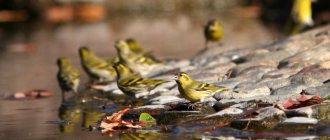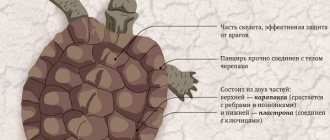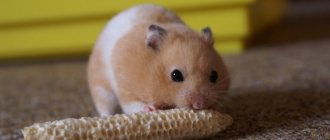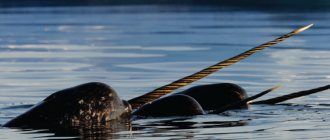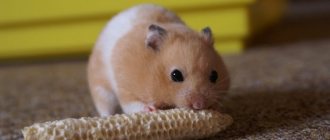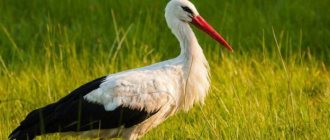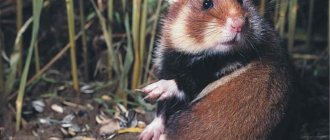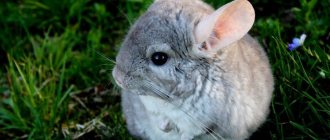Description and features
Weaving by hand is a painstaking task that requires remarkable patience and skill. Weavers, joining threads, pass one of them first over another, and then pull it under the bottom of the third, and continuing in this way, weave together many links using mysterious knots.
This is how entire huge canvases and intricate hand-made masterpieces are obtained. Who would have thought that this technology had long been mastered to perfection by the small weaver bird , for which it was nicknamed this way.
True, the birds, representing the whole family of weavers, create their creations not from artificial threads, but from plant fibers. And the winged craftsmen weave certainly not the clothes that nature has endowed them with. Their feather outfit, of course, can hardly be called too flashy.
It is often very modest and replete with gray, brown and black shades, sometimes diluted with variegated small spots, and only some species have bright areas of red, greenish and yellow colors. But this bird does not need a wardrobe, and therefore knits houses - nests.
This is a delicate, delicate and responsible matter, because it is in these dwellings that new generations of feathered creations of nature will grow up, beginning a wild, free life in its bosom. Alternating loops and tight ties, and in a strictly defined manner, such birds create entire patterned structures of the most varied architecture. It can be:
- ball-baskets (such structures are erected, for example, by representatives of the masked and fiery varieties of weavers);
- long stockings-mittens (they are knitted by Baya weavers);
- huge grass stacks intricately entwining entire trees (they are created by social weavers).
All this is attached to the branches of woody vegetation or to the stems of reeds, ending up suspended in the air, that is, located between heaven and earth. But more about nest-building technology later, and now a little about what these creatures look like.
The creator of the described “castles in the air” is similar to sparrows in size, but not only, but also in appearance, manners, build, and body proportions. In addition, it has many similarities with buntings and finches.
And it is not surprising, because all of these birds are members of the passerine order, and therefore are closely related. However, at the same time, there is a lot of special, individual things in the behavior of the weaver and his way of life.
These birds have a compact, dense build. A round head rests on their short neck. The wings are neat, small, they can be pointed, but more often they have rounded lines.
The shape of the beak is also different: it can be arched and elongated, but more often it has a conical structure. The weaver's singing is very similar in sound to chirping. And therefore these birds are classified as song passerines - this is the name of a suborder of such representatives of the winged fauna.
Not all varieties of weavers are famous for their euphonious melodious voice. Some of the birds make very unpleasant clicking and creaking sounds. But specimens from the genus of finches and paradise widows have mastered the art of imitating the trills of other members of the feathered kingdom.
Weaver lifestyle
The weaver is a flocking bird. Moreover, the number of individuals included in a flock can vary from several tens to several million, such as among social or red-billed weavers. When offspring appear in such a flock, its number can number about 40 million individuals. These are the largest simultaneous aggregations of birds known to modern science. (Only passenger pigeons had similar and even more flocks, which at the moment, unfortunately, are considered an extinct species).
Male and female thick-billed velvet weaver (Euplectes capensis)
Rising into the air, weaver birds stick to a group and fly quite quickly, making sharp turns as they move. The raised flock literally covers the sky, and the noise created by the wings during flight spreads to all corners of the savannah, reminiscent of a roar.
Middle masked weaver (Ploceus intermedius) nests on reed stems
Kinds
The family of described birds includes 272 species. Weavers are mainly distributed across the African continent (this is their biological homeland), but are also found in other areas of the planet: in southern Asia and Europe, on Madagascar and other islands of the Pacific and Indian Oceans. This means that they have successfully adapted to very different conditions, but a comfortable tropical or similar climate is still preferable for them.
Weaver birds, although they are passerine in size, still, if we talk specifically about each variety, they can differ greatly in parameters. Some members of the family are no more than 7 cm, that is, real crumbs.
But others grow almost to the size of a blackbird. The colors of the birds are also arbitrary. But all weavers, without exception, are outstanding masters in building houses from grass stems, thin branches and other plant material.
The family is divided into 17 branches - genera. Let's take a closer look at their individual representatives. And you can not only read about the features of their appearance, but also see a weaver in .
— Public weavers (common). This genus consists of a single small and rare species. The members of both sexes look about the same. The plumage is light brown or brown with a dark pattern and white stripes.
Their cone-shaped beak and paws are cream-colored. Such birds live in shrouds in huge colonies, populating the territories of South Africa, Namibia, and Botswana. Their nests are especially impressive, as they resemble an apartment building of three hundred or more cells.
These structures grow up to a two-meter height and extend up to 8 m in length. Such structures are located on trees, and often, especially in wet weather, they acquire such weight that the branches cannot support them and fall down along with the nests. Such birds also build their houses on telegraph poles.
— Velvet weaver is another name for the genus, which includes about two dozen species. One of them, very interesting, is the fire weaver, which has the brightest and most beautiful feather clothes of the entire family.
The background of the main, quite noticeable parts of the body of such birds is yellow with a reddish tint. At the time of marriage, the male half of the specified details of the outfit become scarlet or red-orange, that is, as the name suggests - fiery.
The abdomen of representatives of the species, as well as the stripes on the back and the head, are black. These creatures are about 13 cm in size. They love to demonstrate their vocal abilities, and therefore tweet all day long.
They live in African shrouds, common in the Seychelles, Mauritius, and Madagascar. These birds make nests in tall grass near water bodies, in reed thickets, and also in plantings of sugar cane and corn.
— Weaver sparrows are found mainly in Kenya. They are very funny, have a sociable disposition, which endears them to people. Therefore, they are easily tamed and decorate the homes of nature lovers. Their plumage is brownish-gray, with white eyebrows and breasts. Such birds are very similar to sparrows, which corresponds to the name, only larger in size.
— Red-winged malimbus . This genus includes a single species of the same name. Its Russian-language name, which is somewhat strange, does not correspond to the external features of its representatives. A striking feature of the appearance of the male half is the red area, which has the appearance of a stocking that hides the head and extends to the neck.
The beak and paws of males are approximately the same color. But their wings are not red at all, but are marked with black stripes on a dirty yellow background, their belly and chest are spotted white. The outfit of females is more modest and abounds in gray and dark shades.
And only the “head stocking” and some areas of the wings are yellow. Such birds are common in tropical African forests. Compared to many relatives in the family, they look taller, thinner and slimmer.
WHERE DOES IT LIVE?
The Great Masked Weaver is one of the most famous members of the family. Birds of this species inhabit areas ranging from sub-Saharan Africa to the grassy steppes of South Africa. Representatives of the species can be both sedentary and migratory. They are found in various biotopes: in forested savannas, on green plains, in agricultural areas, on trees that grow separately, in gardens and at an altitude of up to 2,000 m above sea level. The weaver avoids dense jungle, and in arid areas it tries stay near bodies of water. The bird selects habitats based on the availability of water sources, and therefore in the arid regions of Africa it appears only during the rainy season. The birds forage in grain fields, visit garbage dumps, and establish noisy nesting colonies in large trees.
Lifestyle and habitat
The fauna of the earth's inhabitants mastered the art of architectural construction even before man appeared. And each of these structures, erected by insects, animals and birds, is unique, amazing and completely special. The weaver's nest can well be considered one of the wonders of the vast world, inhabited by a wide variety of organisms.
The shape of such buildings has already been discussed, but only in general terms, because, in addition to what has already been indicated, they can take the form of elongated tubes, be oval and pear-shaped. But there are also species that make their houses in rocky cracks, in other people's burrows and hollows of trees, thus hiding their place of residence from enemies.
Homemade houses have entrance doors, walls and a reliable roof, everything as it should be in decent homes. The main materials used in their construction are grass stems and pieces of leaves, which are sewn together in a special way.
Therefore, this construction always begins with blanks. Here the weaver measures and cuts, using only his own eye and beak as tools. The last thing he does is grab a strip, for example, from a palm leaf, and, continuing to move in the air, tears off a piece of suitable size.
If the house is woven from grass fibers, then first a vertical dense ring is created - a frame. It then elongates until it becomes a spherical dome-shaped area or sac. This is how the back wall of the house is created. Then the front part is woven from plant fibers, and the inlet is located at the bottom.
It is important to make it large enough for the weaver bird to enter, but not too large to allow larger birds of prey to pass through. Sometimes the basis of the building is a triangular frame, the outer part of which is tied with special knots of various types (as is known, there are three of them).
The most important thing for the male half, which is responsible for building nests among weaver birds, is to successfully tie the very first knot. To do this, the bird looks for a suitable thin twig, and a long grass stem is tied around it.
Even this small work not only requires great skill, but can rightfully be considered responsible. After all, all other nodes are based on the initial one. And if you do something wrong, all your work will go down the drain. Gradually, there are more and more ties, and this is how an architectural masterpiece emerges.
And only after the house is basically ready, the female gets involved in the work, designing the interior comfort in the nest. She equips the ceiling, making it impenetrable to the hot rays of the tropics, and also lines the floor with soft materials.
All weavers of the same variety make the same shape and design of the nest. This is what they are taught by instinct, which forces them to create architectural ensembles, uniting in a single emotional impulse.
For example, birds living in huge colonies in shrouds are capable of building up to a hundred nests on one acacia or baobab tree, which, suspended on branches, from a distance look like huge ripe fruits.
Not all weavers are located in tropical latitudes; some representatives of the family have also adapted to life in temperate areas. These include field and house sparrows (they are also considered weaver birds). Their range extends further to the north, where they, but only in proximity to humans, are able to survive even in the vicinity of the Arctic Circle.
People also contributed to the spread of such birds to other regions of the planet: to the Atlantic islands and to remote areas of the New World. The proximity of human habitation is very important for wax-billed weavers that live in Asia and Africa. Some species build their houses directly in the attics of residential buildings in cities and villages.
In general, these birds are not tied to any special living conditions. They successfully exist on farmland, on swampy and river banks, in deserts and steppes, on forest edges, in mountains and on plains.
By nature, these winged creatures are mobile and have many very interesting habits, and therefore it is especially interesting to observe them both in nature and in captivity, because many species of such birds have been successfully domesticated and live in human palaces.
REPRODUCTION
The beginning of the weaver nesting period depends on the region. In humid areas that lie near the equator, the breeding season lasts all year round; in other places, nesting time is limited.
The color of the male during the mating season is extremely bright; yellow, chestnut and black feathers appear in his plumage. Each male builds one or more nests, hanging them from tree branches hanging over the water. First he builds a frame from long blades of grass and palm leaves, then weaves a nest in the shape of a retort. To obtain palm fiber, the weaver makes a hole in the leaf, grabs the edge of the hole with its beak and pulls it along, tearing a long strip from the leaf. The entrance to the nest is located at the bottom or side. To attract a female, the male sings, hanging upside down on the nest and fluttering his wings. The weaver's partner completes the improvement of the nest, lining the inside with down, plants and other soft material. After finishing the construction of the nest and fertilizing the female, the male loses interest in her future fate and soon begins to build the next nest for another female. During the mating season, a male can mate with up to five females, while a female can have no more than three partners. In many colonies, the number of females exceeds the number of males.
The female lays 2-3 eggs (they can be white, blue, pink), incubation of which lasts two weeks. Weaver chicks begin to fly at three weeks of age.
Nutrition
In Africa, that is, in the homeland of birds, the weaver is considered an intolerable pest. And for good reason, because such birds manage to absorb almost half of the grain harvest grown on the continent.
From this we can easily conclude that this representative of the feathered fauna is a herbivorous creature. In addition to grain, such birds feed on berries and seeds. And only some species strive to diversify their menu by adding insects to it.
It is not difficult to feed such funny pets at home. A wide variety of seeds can be used here, for example, flax, rapeseed, lettuce, and meadow grasses. But this is for kids, and larger species willingly eat sunflower and hemp seeds.
Such birds especially like mogar from cereals, and chumiz from grains. In winter conditions, sprouted seeds, charcoal, and finely crushed egg shells are very suitable for vitamin and mineral doping.
Gulda Amadina. Video (00:00:00)
Gould's finch is an Australian bird of the finch family that was discovered by the British naturalist and animal artist John Gould during his travels around Australia in 1838 and 1840.
It was then that John Gould made a scientific description of the species in 1844. The scientist named his “find” in memory of his wife Elizabeth Gould, who accompanied him on these trips and died shortly after his return.
The bird was named Lady Goulds Amadine. The birds described by Gould were Gould's black-headed finches. At the time of their discovery, the red-headed and yellow-headed variants of this species were still considered independent species.
Classification
- Finches (Amadina Swainson, )
- Amandava (Amandava Blyth, ) (including golden-breasted and brindle astrilds)
- Gouldian finches (Chloebia Reichenbach, )
- Brown astrilds (Clytospiza Shelley, )
- Mountain astrilds (Cryptospiza Salvadori, )
- Painted Astrilds (Emblema Gould, )
- Parrot Finches (Erythrura Swainson, )
- Astrilda (Estrilda Swainson, 1827)
- Slate astrilds (Euschistospiza Wolters, )
- White-breasted munia (Heteromunia Mathews, )
- Pearl astrilds (Hypargos Reichenbach, 1862) Pearl astrilds ( Hypargos margaritatus
)
De Vis,
- Widows (Vidua Stresemann, )
